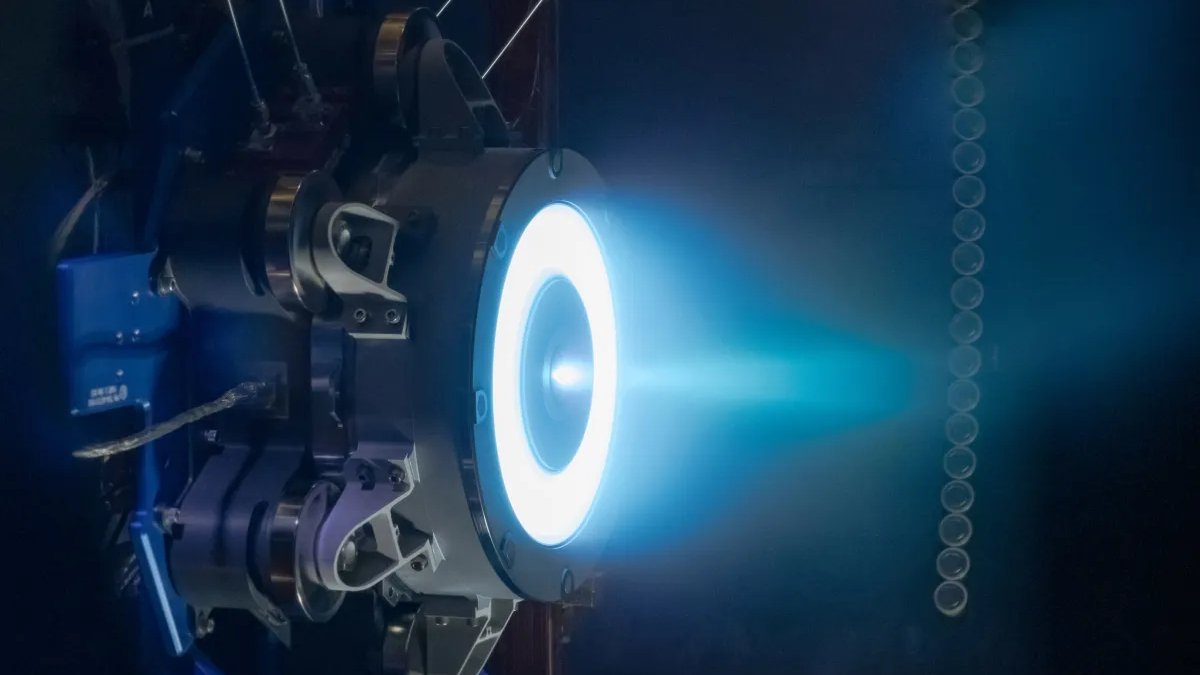
NASA and Aerojet Rocketdyne are taking a big step in testing a new ion propulsion engine that will help power lunar exploration.
The Advanced Electric Propulsion System (AEPS) has been undergoing qualification testing at NASA's Glenn Research Center in Cleveland, according to a statement from the agency.
AEPS is a Hall effect thruster, which accelerates ions to generate thrust. The AEPS uses electricity generated by solar arrays to create a steady stream of ionized xenon gas, producing low but highly efficient thrust.
Related: NASA's Gateway moon-orbiting space station explained in pictures
The 12-kilowatt Hall thruster is the most powerful electric propulsion thruster in production, according to NASA, being over two times more powerful than the current state-of-the-art in-space electric propulsion. The agency says the new thruster will be critical to future science and exploration missions at the moon and beyond.
"AEPS is truly a next-generation technology," Clayton Kachele, the AEPS project manager at NASA's Glenn Research Center in Cleveland, said in a statement in July, during an earlier testing run.
"Current electric propulsion systems use around four and a half kilowatts of power, whereas here we're significantly increasing power in a single thruster," Kachele added. "That capability opens a world of opportunity for future space exploration, and AEPS will get us there farther and faster."
The thrusters will be used on the Power and Propulsion Element (PPE) of Gateway; NASA's planned lunar space station that will support Artemis missions and more. Xenon gas for the engines will be among the supplies needed to be replenished by cargo missions to the Gateway to keep the small lunar station operating smoothly. A dedicated Xenon Transfer System (XTS) is being developed by OHB in Bremen, Germany for this purpose.
NASA will test a second thruster qualification article in 2024. That test will simulate conditions that AEPS will likely experience during Gateway's initial orbit raising and transition to lunar orbit. NASA plans to operate the thrusters for 23,000 hours in total during a nearly four-year test campaign inside NASA Glenn's vacuum chambers.
PPE is currently scheduled to launch on a SpaceX Falcon Heavy rocket in November 2025.







